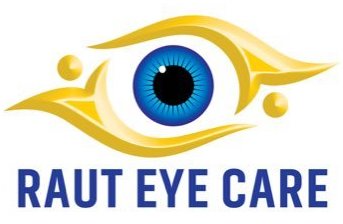Latest articles on eye care
Read the latest articles on eye care, eye diseases, eye tests, eye surgeries, eye care tips and more

What is a -1.25 spectacle glasses number
Having a -1.25 number of glasses is indicative of a myopia. This kind of number can be seen in people who have a bigger eye or a longer eye. You will require glasses for this number for distance vision as well as reading. This number can cause strain for reading if you do not use it and strain for distance vision as well. Not uisng this number can also cause a accomodative spasm. This number can also lead to squinting of eyes. -1.25 number can even be needed for distance vision by people who are straining their eyes or are working on a laptop or pc the whole day. You can use contact lenes instead of glasses and this number can be removed by the use of laser lasik surgery or contoura lasik surgery. The axial length of the eye is more than normal by 0.45 mm in with this number which can be measured by a IOL master scan.

What is a -1.00 spectacle glasses number
Having a -1.00 number of glasses is indicative of a myopia. This kind of number can be seen in people who have a bigger eye or a longer eye. You will require glasses for this number for distance vision as well as reading. This number can cause strain for reading if you do not use it and strain for distance vision as well. Not using this number can also cause accomodative spasm. This number can also lead to squinting of eyes. -1.00 number can even be needed for distance vision by people who are straining their eyes or are working on a laptop or pc the whole day. You can use contact lenes instead of glasses and this number can be removed by the use of laser lasik surgery or contoura lasik surgery. The axial length of the eye is more than normal by 0.3 mm in with this number which can be measured by a IOL master scan.

What is a -0.75 spectacle glasses number
Having a -0.75 number of glasses is indicative of a myopia. This kind of number can be seen in people who have a bigger eye or a longer eye. You will require glasses for this number for distance vision as well as reading. This number can cause strain for reading if you do not use it and strain for distance vision as well. Not using this number can also cause a mild accomodative spasm. This number can also lead to squinting of eyes. -0.75 number can even be needed for distance vision by people who are straining their eyes or are working on a laptop or pc the whole day. You can use contact lenes instead of glasses and this number can be removed by the use of laser lasik surgery or contoura lasik surgery. The axial length of the eye is more than normal by 0.2 mm in with this number which can be measured by a IOL master scan.

What is a -0.50 spectacle glasses number
Having a -0.50 number of glasses is indicative of a very mild myopia. This kind of number can be seen in people who have a bigger eye or a longer eye. This is a very small number to have and most people do not require glasses with this number for distance vision. However this number can cause strain for reading if not used in your glasses. This number can also cause a small accomodative spasm. This number can also lead to squinting of eyes. -0.50 number can even be needed for distance vision by people who are straining their eyes or are working on a laptop or pc the whole day. You can use contact lenes instead of glasses and this number can be removed by the use of laser lasik surgery or contoura lasik surgery. The axial length of the eye is more than normal by 0.1 mm in with this number which can be measured by a IOL master scan.

Glasses number +0.25
Having a +0.25 number of glasses is indicative of a very mild hypermetropia. This kind of number can be seen in people who have a smaller eye or a shorter eye. This is a very small number to have and most people do not require glasses with this number. +0.25 number can even be needed for reading by people who are nearing the age of 40 or are working on a laptop or pc the whole day.

Painless cataract surgery in Pune
Dr Rajeev Raut pioneered painless stitchless, no injection cataract surgery since 1987. At RAUT EYE CARE painless, stitchless, no injection cataract surgery is performed by Dr. Rajeev Raut, Dr. Aditya Raut and Dr. Kumud Raut. To perform this type of surgery anesthetic eye drops are instilled in the eye prior to surgery. These drops anesthetize only the eye. No pain is felt before the procedure, during the procedure or after the procedure. Generally no injection cataract surgery is promised by many surgeons, however depending on the grade and hardness of the cataract many surgeons still use injections. At RAUT EYE CARE no matter what hardness or grade of cataract the surgery is still performed without injections and pain because of advanced technology and cutting edge techniques.

Keratoconus Screening
Keratoconus Screening is an important eye examination to detect an eye condition called keratoconus.
Keratoconus is a disease where the conrnea thins out in certain areas leading to loss of vision and blurred vision. Constantly changing eye glasses number , frequent itching sensation in the eyes, blurred vision, high astigmatism or cylindrical number all can be symptoms of Keratoconus.
Here are the steps involved in keratoconus screening:Visual Acuity Test: This test is used to evaluate your vision and check for any vision abnormalities.
Refraction Test: This test helps to determine your eyeglass prescription.
Corneal Topography: This test takes a detailed map of the shape of the cornea and can detect any abnormalities in its shape that could indicate the beginning stages of keratoconus.
Anterior segment oct:
This is essentially a mri of the cornea
It gives detailed information of each layer of the cornea and helps diagnose early Keratoconus and helps dofferentiate between types of Keratoconus.
Pentacam/visionix:
This uses scheimflug camera technology to photograph the cornea in various slices giving a tomography of the cornea. Along with other tests it helps detect progression of the disease.
Slit Lamp Exam: This exam uses a special device called a slit lamp which magnifies and illuminates the eye to detect any abnormalities in the cornea.
Keratometry: This test measures the curvature of the cornea and can detect any abnormal shapes which could indicate the beginning stages of keratoconus.
Pachymetry: This test measures the thickness of the cornea and can detect any changes that could be indicative of keratoconus.
Ultrasound Biomicroscopy: This test uses sound waves to take a detailed image of the cornea and can detect any irregularities in its shape which could be indicative of keratoconus.
Keratoconus Screening is an important eye examination to detect an eye condition called keratoconus.
Keratoconus is a disease where the conrnea thins out in certain areas leading to loss of vision and blurred vision. Constantly changing eye glasses number , frequent itching sensation in the eyes, blurred vision, high astigmatism or cylindrical number all can be symptoms of Keratoconus.
Here are the steps involved in keratoconus screening:Visual Acuity Test: This test is used to evaluate your vision and check for any vision abnormalities.
Refraction Test: This test helps to determine your eyeglass prescription.
Corneal Topography: This test takes a detailed map of the shape of the cornea and can detect any abnormalities in its shape that could indicate the beginning stages of keratoconus.
Anterior segment oct:
This is essentially a mri of the cornea
It gives detailed information of each layer of the cornea and helps diagnose early Keratoconus and helps dofferentiate between types of Keratoconus.
Pentacam/visionix:
This uses scheimflug camera technology to photograph the cornea in various slices giving a tomography of the cornea. Along with other tests it helps detect progression of the disease.
Slit Lamp Exam: This exam uses a special device called a slit lamp which magnifies and illuminates the eye to detect any abnormalities in the cornea.
Keratometry: This test measures the curvature of the cornea and can detect any abnormal shapes which could indicate the beginning stages of keratoconus.
Pachymetry: This test measures the thickness of the cornea and can detect any changes that could be indicative of keratoconus.
Ultrasound Biomicroscopy: This test uses sound waves to take a detailed image of the cornea and can detect any irregularities in its shape which could be indicative of keratoconus.

Cataract Screening with AI on a mobile phone : ScanMyEye App
A cataract is a clouding of the lens in the eye. The lens is a clear structure that helps to focus light onto the retina, the light-sensitive tissue at the back of the eye. When the lens becomes cloudy, it can cause vision problems, such as blurred vision, glare, and difficulty seeing at night. Cataracts are very common, especially in older adults. In fact, by age 80, more than half of all Americans have cataracts. Cataracts can also be caused by certain medical conditions, such as diabetes, and by exposure to certain medications, such as steroids. There is no cure for cataracts, but they can be treated with surgery. Cataract surgery is a safe and effective procedure that can restore clear vision. If you are concerned about your vision, it is important to see an eye doctor. An eye doctor can diagnose cataracts and recommend the best treatment option for you. Here are some of the symptoms of cataracts: Blurred vision Double vision Glare Difficulty seeing at night Colors appear faded Sensitivity to light If you experience any of these symptoms, it is important to see an eye doctor right away. Cataracts can be a serious condition, but they are also very treatable. With early diagnosis and treatment, you can enjoy clear vision for many years to come.

Retina Treatment Near Me : RautEyeCare, Pune
RautEyeCare has a team of experienced ophthalmologists who specialize in diabetic retinopathy. They offer comprehensive screenings, advanced diagnostic tests, and personalized treatment plans to effectively manage and prevent vision loss associated with diabetic retinopathy. Their expertise, combined with state-of-the-art facilities, ensures that patients receive top-notch care for this condition.

